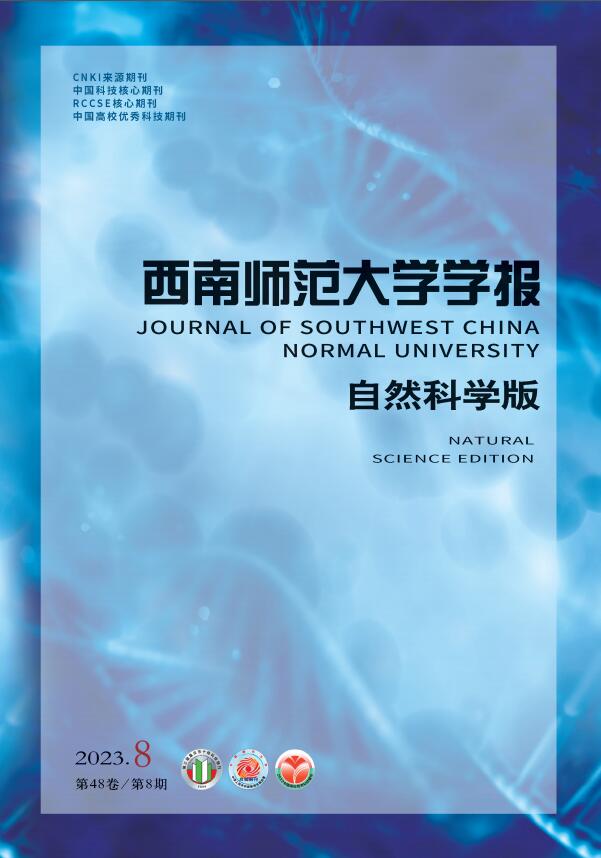-
文献[1-4]对Kuramoto-Sivashinsky方程的吸引子进行了研究,并建立了相对完善的理论体系. 文献[5-9]对非自治动力系统的拉回吸引子的存在性与后向紧性做了研究. 文献[10-11]研究了非自治格系统吸引子的后向紧性. 本文将研究具有乘性噪音的Kuramoto-Sivashinsky方程
的空间离散化. 其中
$ \mathbb{Z}$ 代表整数集,υ>0,λ>8,β>2,W是完备概率空间(Ω,$\widetilde{\mathscr{F}} $ ,P)上的双边实值Wiener过程,Ω={ω∈C($\mathbb{R} $ ,$\mathbb{R} $ ):ω(0)=0},$\widetilde{\mathscr{F}} $ 是由Ω的紧开拓朴生成的σ-代数,P是在(Ω,$\widetilde{\mathscr{F}} $ )上相应的Wiener测度. 对于非自治项g=(gi)i∈$ \mathbb{Z}$ ,有如下假设条件:(G)g∈Lloc2(
$\mathbb{R} $ ,$\ell^{2} $ ),且满足本文主要研究随机Kuramoto-Sivashinsky格方程的后向紧随机吸引子.
HTML
-
为了方便,定义
$\ell^{2} $ 上的有界算子其中涉及的三线性形式为
微分方程(1)可整理为
下面证明方程(4)能生成随机动力系统.
做变量替换v(t)=e-z(θtω)u(t). 其中u(t)是方程(4)的解,
$z\left(\theta_{t} \omega\right)=-\int_{-\infty}^{0} \mathrm{e}^{r} \theta_{t} \omega(r) \mathrm{d} r $ 是方程的稳态解. 由文献[10, 12]可知,对任意ω∈Ω,z(θtω)关于t连续,且满足
因此方程(4)可转化为关于v的随机微分方程
由文献[1]和Galevkin逼近法,容易证明对任意T>0,v0∈
$\ell^{2} $ ,ω∈Ω,方程(6)存在唯一的解v(∙,τ,ω,v0)∈C([τ,+∞),$\ell^{2} $ ),且依赖初值v0连续. 因此方程(6)在(Ω,$\widetilde{\mathscr{F}} $ ,P,{θt}t∈$\mathbb{R} $ )上能生成一个连续的随机动力系统{Φ(t)}t≥0,即对v0∈$\ell^{2} $,t≥0,τ∈$\mathbb{R} $ 和ω∈Ω,有
-
在下文中,设
$\mathscr{D}_{0} $ 是X中所有缓增集构成的集合,$\mathscr{D} $ 是X中所有后向缓增集构成的集合. 若集合D满足则称集合D为后向缓增集.
引理1 若条件(G)成立,则对任意后向缓增集D∈
$\mathscr{D} $ ,τ∈$\mathbb{R} $ ,ω∈Ω,存在T=T(D,τ,ω)≥1,使得t≥T且vs-t∈D(s-t,θ-tω),有成立,其中
证 对任意固定的τ∈
$\mathbb{R} $ ,ω∈Ω,vs-t∈D(s-t,θ-tω),令其中s≤τ. v(r)与方程(6)做内积,可得
其中
利用Young不等式,有
由文献[11]知‖Bv‖≤2‖v‖,故2‖Bv‖2≤8‖v‖2. 又由(10),(11),(12)式以及Young不等式,整理可得
对(13)式利用Gronwall不等式,计算可得
对(14)式关于s∈(-∞,τ]取上确界,由于vs-t∈D(s-t,θ-tω)(s≤τ),结合(5),(7)式可知,存在T=T(s,ω,D)≥1,使得当t≥T时,有
因此可以得到
即(8)式得证.
命题1 若条件(G)成立,则对
$\forall $ ε>0,(τ,ω,D)∈($\mathbb{R} $ ×Ω× $\mathscr{D} $),vs-t∈D(s-t,θ-tω),存在T(ε,τ,ω,D)>0,K(ε,τ,ω,D)≥1,使得证 构造光滑函数ρ,满足0≤ρ≤1,且当|s|≤1时ρ=0,当|s|≥2时ρ=1. 假设存在常数c0,使得对任意s∈
$ \mathbb{R} $ ,有|ρ′(s)|≤c0. 令K是一个固定的整数,设ψ与方程(6)做内积,可得
其中
由于|ρ′(s)|≤c0,因此
由Young不等式可知
由(17)-(21)式可得
对(22)式运用Gronwall引理,计算整理可得
根据(5)式可知,对
$\forall $ ε>0,存在C=C(ε,ω)>0,使得由于vs-t∈D(s-t,θ-tω)(s≤τ),因此,在(24)式中令
$ \varepsilon <\frac{\lambda-8}{4}$ ,结合(5),(7)式可得由引理1与条件(G)可知,存在T>0,当t>T时有
因此,结合(26)-(28)式可得,对
$ \forall$ ε>0,(τ,ω,D)∈($ \mathbb{R}$ ×Ω×$\mathscr{D}$ ),vs-t∈D(s-t,θ-tω),存在T(ε,τ,ω,D)>0,K(ε,τ,ω,D)≥1,使得
-
定理1 若条件(G)成立,则方程(1)生成的动力系统存在后向紧随机吸引子.
证 {Φ(t)}t≥0满足文献[13]中定理3.9的拉回吸引子的两个存在性条件:
(i) 非自治动力系统{Φ(t)}t≥0存在
$\mathscr{D}_0$ -拉回随机吸收集$\mathscr{K}_0$ ∈$\mathscr{D}_0$ ,其中(ii) 非自治动力系统{Φ(t)}t≥0存在
$\mathscr{D}$ -拉回后向一致吸收集$\mathscr{K}$ ∈$\mathscr{D}$ ,其中由文献[6]可得非自治动力系统{Φ(t)}t≥0在吸收集
$\mathscr{K}$ ∈$\mathscr{D}$ 上是后向紧的.又因为随机吸引子的后向并是预紧的,则称该吸引子为后向紧随机吸引子. 因此方程(6)生成的非自治随机动力系统Φ(t)存在唯一的后向紧
$\mathscr{D}$ -拉回吸引子$\mathscr{A}$ ∈$\mathscr{D}$ 和唯一的可测$\mathscr{D}_0$ -拉回吸引子$\mathscr{A}_0$ ∈$\mathscr{D}_0$ . 再由文献[12]的定理6.1知$\mathscr{A}$ =$\mathscr{A}_0$ ,故吸引子$\mathscr{A}$ 也是随机的,即Φ(t)存在唯一的后向紧$\mathscr{D}$ -拉回随机吸引子$\mathscr{A}$ ∈$\mathscr{D}$ . 再由文献[14-15]知方程(1)与(6)生成的随机动力系统共轭,从而可知方程(1)存在后向紧随机吸引子.






 DownLoad:
DownLoad: